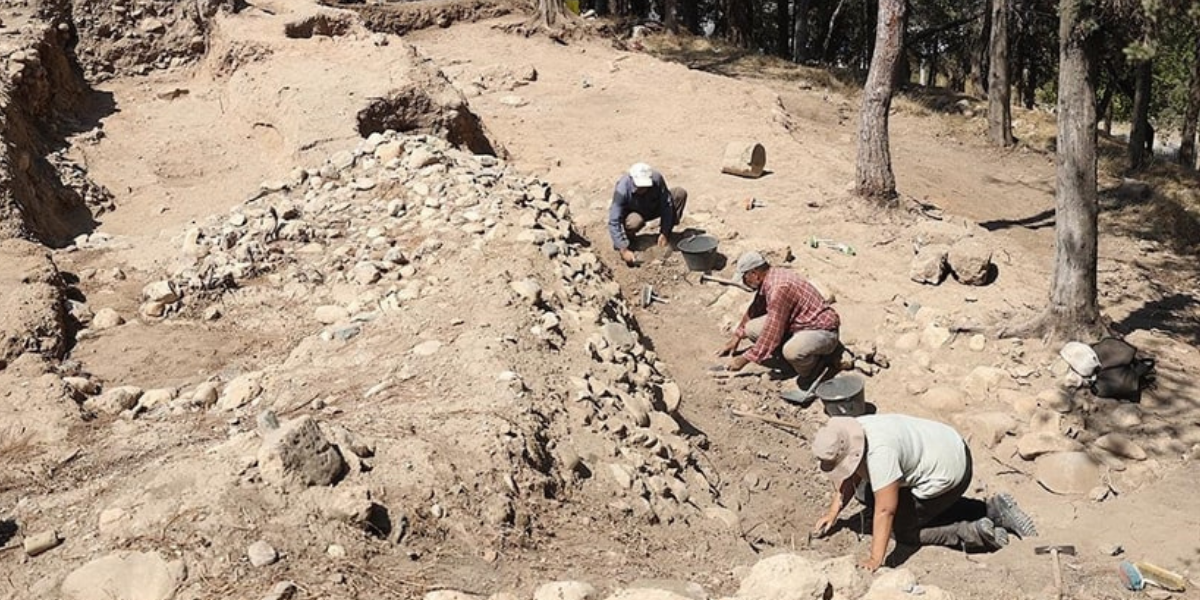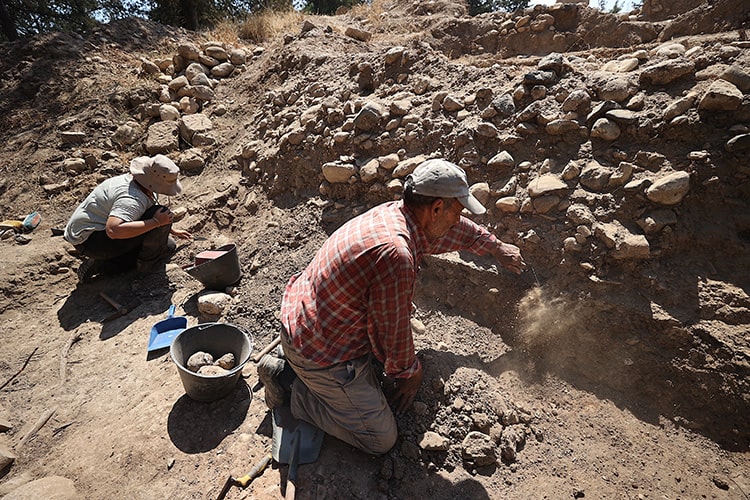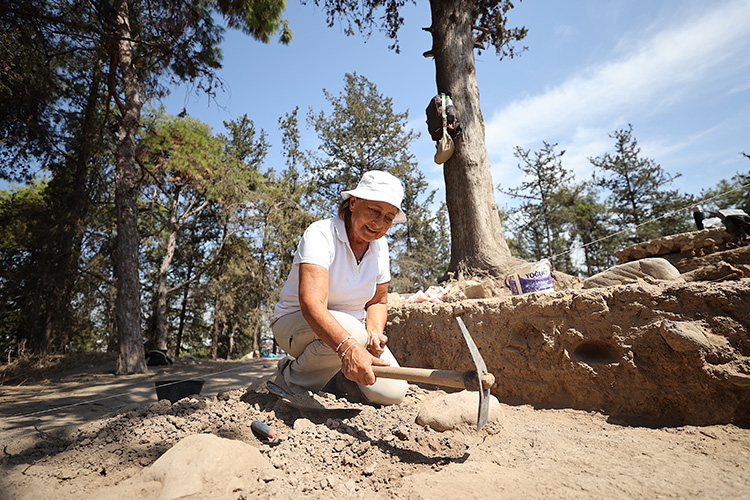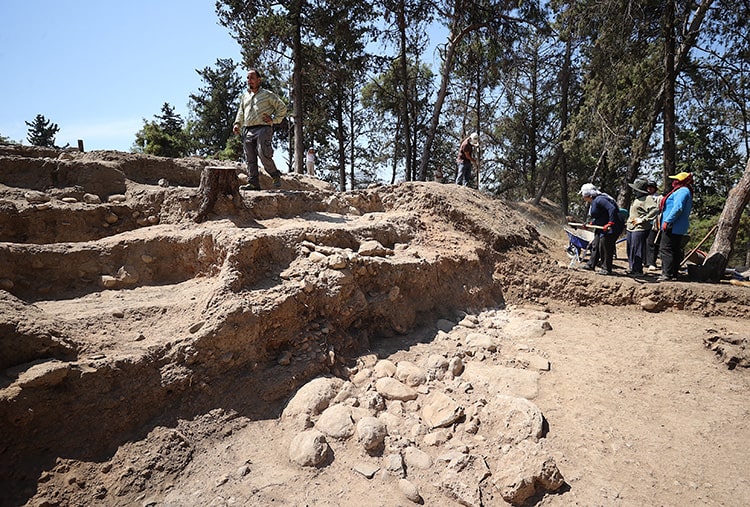
Archaeologists continue to work on the Hittite fortification structure at Yumuktepe Mound
Archaeologists continue to work on the Hittite-era fortification structure unearthed at the 9,000-year-old Yumuktepe Mound in Mersin province, Türkiye.
The uninterrupted settlement from the Neolithic period to the present day makes Yumuktepe a “cradle of civilizations”.
The fact that traces of the first castle-like structure in the world were found in the layer dated to 4500 BC makes Yumuktepe interesting in the world of archaeology.

Yumuktepe 30th period excavations continue under the direction of Prof. Dr. Giulio Palumbi, Professor of Archaeology at the Aldo Moro University of Bari in Italy.
The Hittite fortification structure was uncovered in 1939. A team of 20 people including hittitologists, archaeologists and art historians are working on the mound.
Prof. Dr. Giulio Palumbi said, “In the 1930s-1940s, John Garstang from the University of Liverpool conducted studies here, structures with the foundations of the Hittite Period fortification wall were identified.”

Emphasizing that finding the continuation of the Hittite Period fortification structure identified by John Garstang is also among his goals, Palumbi said:

“John Garstang says that there was a very important settlement at Yumuktepe during the Late Bronze Age. We also aim to obtain new findings from the Early Bronze Age, for which we have very limited data so far since the previous excavations. In this way, we aim to increase our knowledge about periods that we knew little about in previous years. We are trying to understand the role of Yumuktepe in Western Anatolia and the Mediterranean in the 3rd millennium BC and the level of its communication with these regions.”
Cover Photo: Serkan Avci/AA
You may also like
- A 1700-year-old statue of Pan unearthed during the excavations at Polyeuktos in İstanbul
- The granary was found in the ancient city of Sebaste, founded by the first Roman emperor Augustus
- Donalar Kale Kapı Rock Tomb or Donalar Rock Tomb
- Theater emerges as works continue in ancient city of Perinthos
- Urartian King Argishti’s bronze shield revealed the name of an unknown country
- The religious center of Lycia, the ancient city of Letoon
- Who were the Luwians?
- A new study brings a fresh perspective on the Anatolian origin of the Indo-European languages
- Perhaps the oldest thermal treatment center in the world, which has been in continuous use for 2000 years -Basilica Therma Roman Bath or King’s Daughter-
- The largest synagogue of the ancient world, located in the ancient city of Sardis, is being restored











Leave a Reply